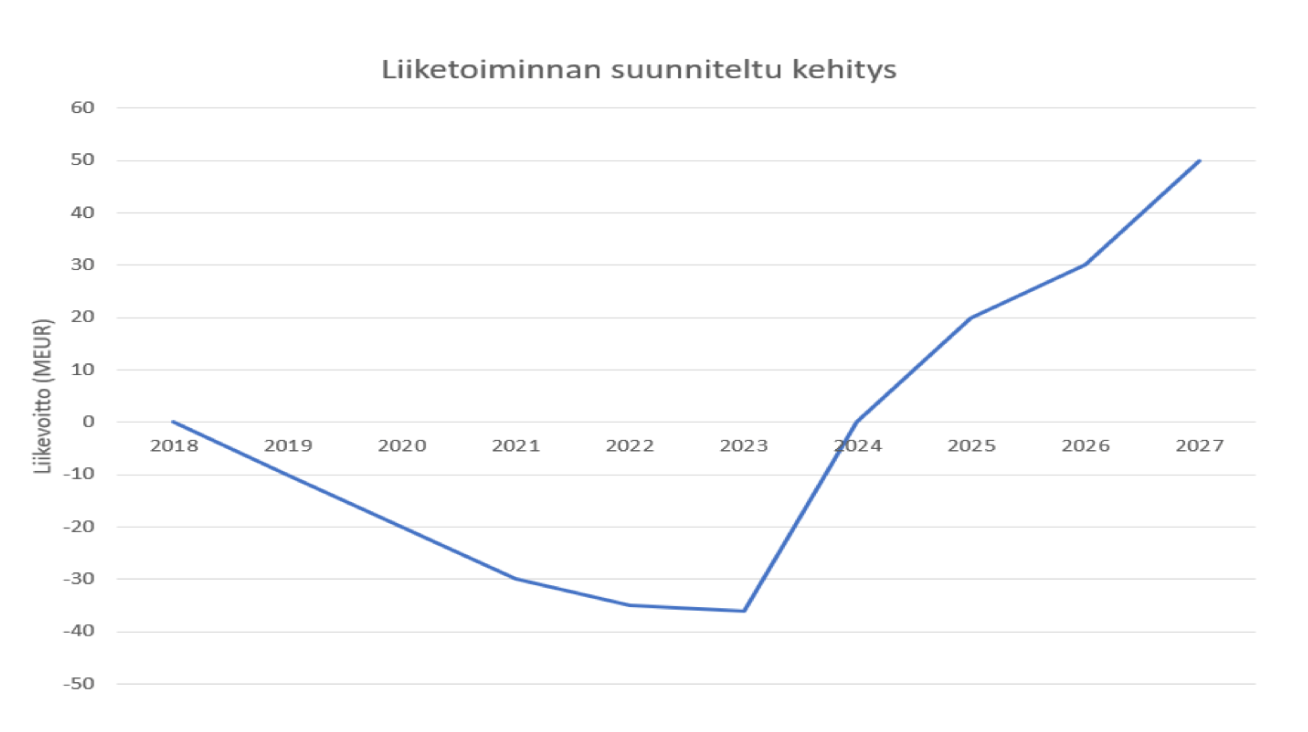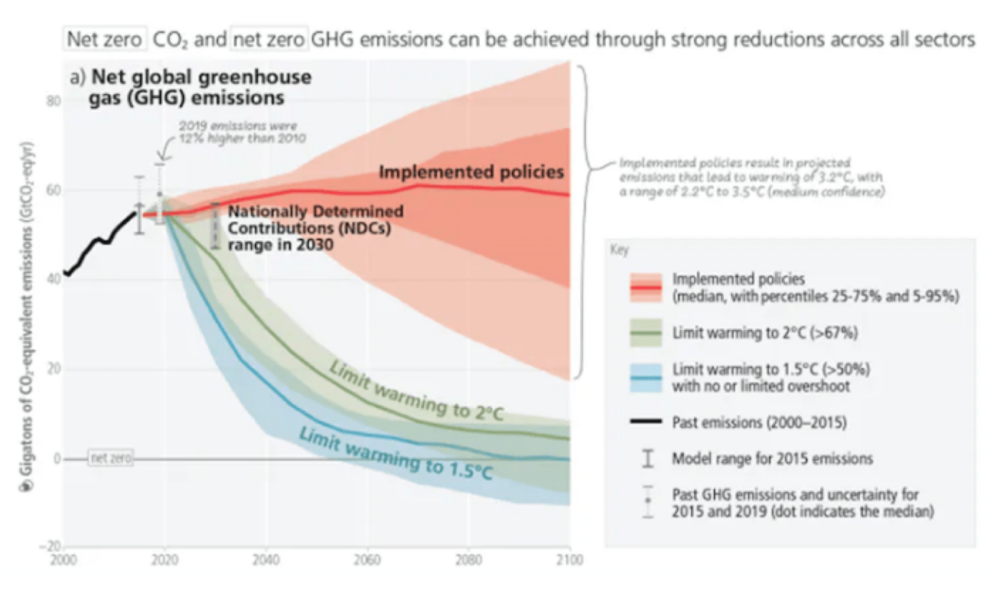Originally published at Bonfire
Many readers of this blog post have probably both made and evaluated business plans. Some of you, no doubt, have experience with demanding turnaround cases. Business plans are often evaluated from various perspectives: Is the right team implementing the plan? Is the organisation and especially the company’s management behind the plan? Are the growth plans ambitious but realistic? And have all the risks been assessed?
Let’s look at one example of a business plan. As you can see from the graph below, the company has been in a downward spiral for a long time. However, the management suggests that the company has the opportunity for an immediate change of direction and a quick turnaround from very negative to very positive. The management says that, in principle, the technologies to implement the plan exist, but customer demand is weak and only less than half of the company’s key personnel is committed to the plan. How likely do you think it is that the plan will be successful? If the success of the plan was vital to the company, what advice would you give to improve the plan?

Planned business development
Now, let’s look at another graph below. This graph is the IPCC’s presentation on how carbon dioxide emissions should be reduced to stay on the 1.5°C curve. Achieving the 2°C curve doesn’t seem easier either. As in the presented business plan case, also in this case, there is hardly any “customer demand” to bring about change, not even in the Western countries, and the key stakeholders, i.e. decision-makers in the largest countries, are not committed to implementing this particular plan. Of course, many would like the plan to succeed, but committing to it is not a top of their priority list.
For example, 70% of Americans believe in climate change. However, only 53% believe it is caused by humans. Hence, what is the motivation of the remaining 47% to participate in climate actions or even vote for candidates with climate issues on their agenda?

Net global greenhouse gas emissions
What are the scenarios get on the right curves? Here are a few possibilities – however, I will not evaluate their probabilities in this blog:
- Political solution: A political awakening in which the largest countries in the world find a common mission to solve the issue. For example, previously, a sufficient consensus on significant limitations on freons was found and decisive action was initiated to inhibit ozone depletion. As a result, the ozone layer has started to recover.
Opportunities: A very scalable solution where the market can be harnessed to solve the problem.
Threats: The current geopolitical situation is extremely challenging for such a solution. Many countries are afraid of undermining their competitiveness. - Technological solution: Breakthroughs in sustainable technologies, where sustainable solutions are mainly also the cheaper option. Affordable renewable energy and the circular economy are key success factors to this solution.
Opportunities: No need for a geopolitical consensus. The markets are extremely efficient in such situations.
Threats: Requires an enormous amount of investment money and implementation capabilities. Is this solution fast enough? Will it, eventually, lead to over-consumption of materials? - Individual solution: A large-scale change in the behaviour of individuals towards a more sustainable lifestyle.
Opportunities: Making sustainable choices can quickly affect emissions from consumption if circular economy models become more common. Ultimately, the customer demand will also guide companies, so this option can scale quickly.
Threats: In many countries, for example in Africa and Asia, a consuming middle class is only emerging. If the change in consumer behaviour takes place solely in the Western countries, the effect may be too modest. In addition, habits tend to change slowly. At the moment, still, many people do not even believe that climate change is caused by humans. - Adapting to the consequences and possible climate modification: Since the solutions mentioned above do not work currently, countries, together or separately, are building different operating models and protection mechanisms for a warmer and more unstable climate. Possibly, climate modification technologies will be tried out to hold back the warming.
Opportunities: No significant behavioural changes are required.
Threats: The consequences of climate change can be so huge that adaptation is not possible. Climate modification is risky because we are not able to model its overall effects. At worst, this could lead to catastrophic consequences. - Passive solution: Finding a balance through crises caused by the effects of climate change.
Opportunities: Not a very desirable solution.
Threats: The costs to the earth and civilisation would be enormous. At worst, positive developments would be reversed.
In reality, the solutions are likely to be some combination of the above. However, it is important to understand the required slope change. No data shows yet a change in the trend from negative to positive. Stabilization has started, which is a good first step. In order to stay on the 1.5-2.0°C curves, we should already be on a strongly positive curve. Each year that develops steadily only amplifies the future challenges.